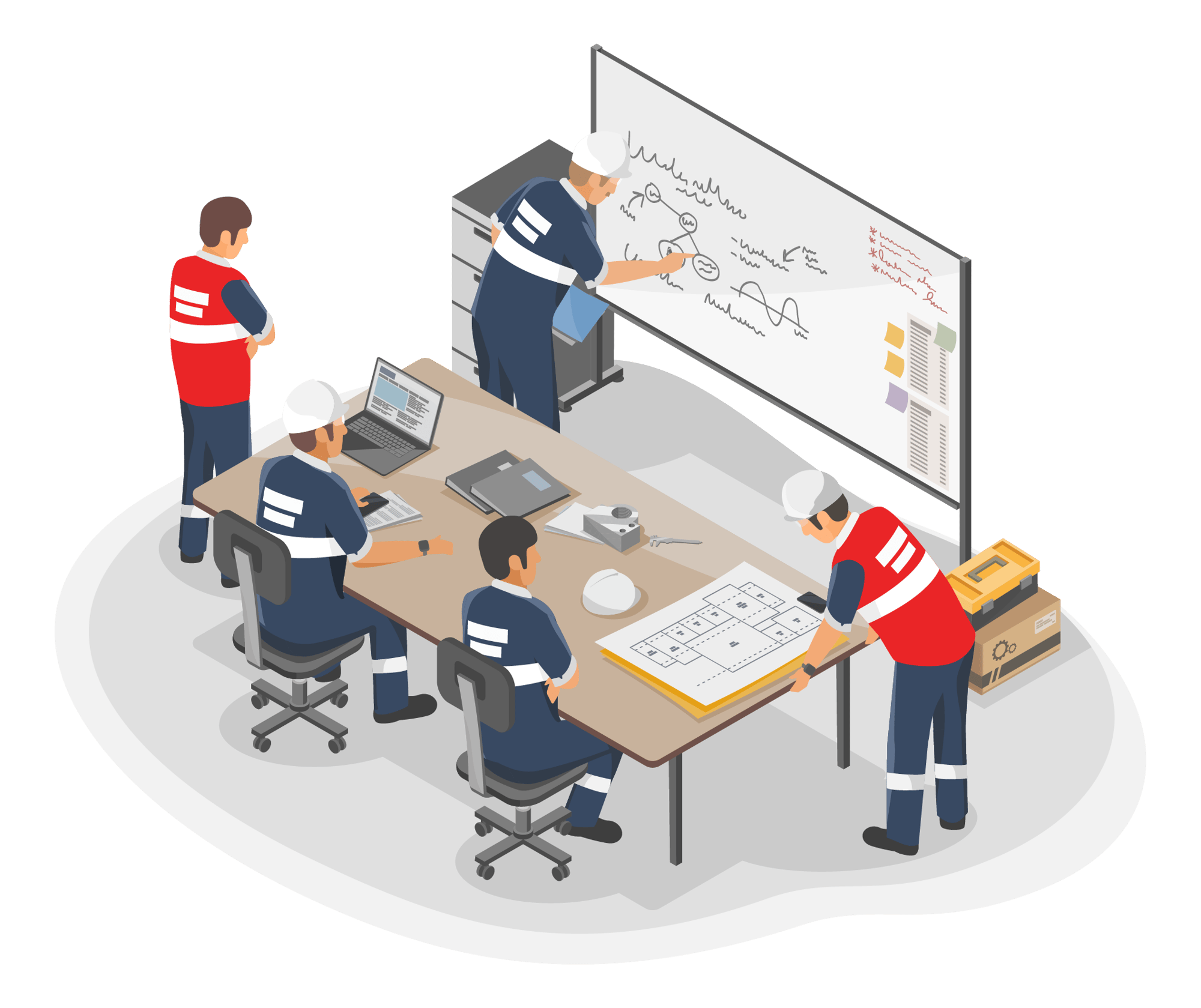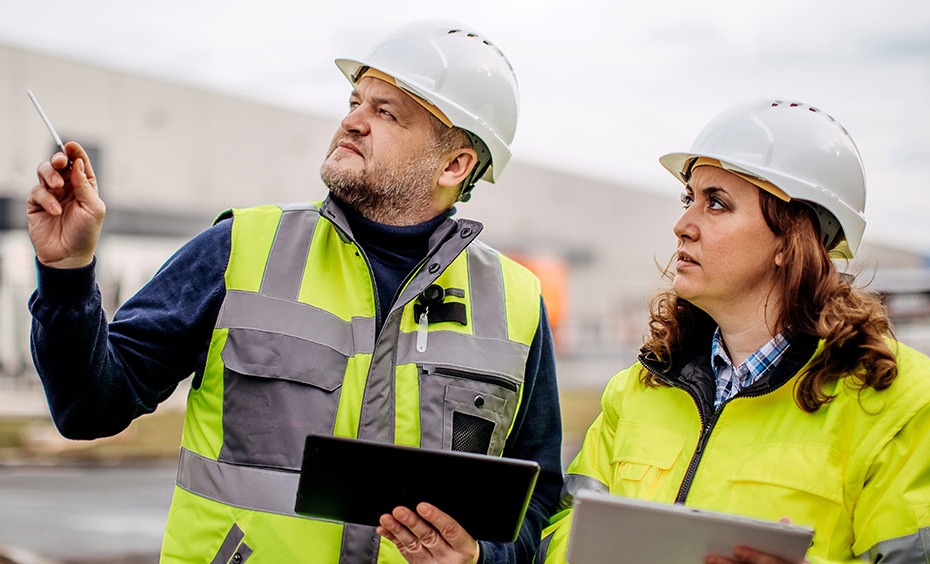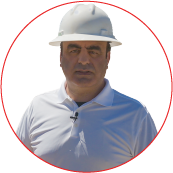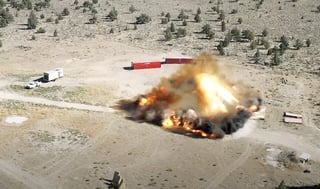
REDGUARD GUIDE SERIES The Importance of Third-Party Blast Tests with Engineer Ali Sari
Our team at RedGuard recently conducted a video interview with Engineer Ali Sari, manager at Omega-Risk, to discuss the importance of third-party blast testing for blast resistant buildings. As a highly respected expert in the industry with 20 years of experience, Dr. Sari specializes in providing innovative, high-quality blast and fire engineering consultancy services at a leading consultancy firm in Houston, TX. Together we unpacked some valuable insights about blast testing that you should know.
Before we jump into the Q&A, Let’s define exactly what we mean when we refer to “third-party” blast testing.
What are “Third-Party Blast Tests” for Blast Resistant Buildings?
“Third-party” blast testing is conducted by a separate engineering firm, rather than the manufacturer of the blast resistant buildings themselves. When purchasing a blast resistant building, it’s important to ask if the blast testing was completed by a third party to ensure unbiased results. Involving third-party entities in blast testing ensures an unbiased, ethical, and transparent evaluation process, which is fundamentally crucial in protecting teams in high-risk environments.


Q&A with Engineer Ali Sari
Q: “What is the purpose of conducting blast tests on blast resistant buildings, and how do these tests contribute to safety?”
A: “Actually, we have a few goals for this test - specifically, we want two things: First, we do a blast test, and the structure itself responds to the blast load applied to it. The structure should resist, or withstand, that blast load. But the second important issue is when these structures are exposed to the blast loads, we want to ensure that the occupants of these buildings, the people inside of the building, will not actually experience any injuries or anything due to the sliding or movement of the building.
Those are difficult to analyze sometimes, so we develop methodologies. We are leading in the industry in terms of the analytical methodologies that we develop. But we want to also ensure those methodologies are correct. We want to verify that the findings that we had using those methodologies and the blast tests match.
So, those are some of the goals we have in blast design. But the test wasn't only related to the blast- we also do fire testing. We want to ensure that our modular buildings can resist fire loading. That fire load represents the jet fire or pool fire, that kind of hydrocarbon fire that can be seen in the refineries or petrochemical facilities.”
Q: “How do third-party blast tests differ from in-house or manufacturer-conducted tests, and why are they crucial?”
A: “If I want to stage a test, I can stage in a way that I can get any result that I want to get, or anyone can do that. So that is what we see. We see examples of it in industry. There are a lot of tests. Companies do their own tests, and then what happens is they can stage in a way that they - interestingly, you can understand the staging of the test - because they want to show their product is better than the other product.
Generally, you don't do that. I mean, generally in testing what we do is somebody come to us saying, “Okay, this is my product, and can you test for us?” And you test, and you report and tell them this is the test results for your product, and this is what we found, in terms of sliding, in terms of velocity response…
Typically, fair testing is done for certain products for a test setup that is widely accepted so that you don't make up a test setup and try to compare two products and then tell your product is better, without even explaining the details of the testing.
So, we don't even know. For example, in some testing that we see, through the comparison, we don't know what type of materials the other product is made of. I mean, what are the details in terms of design? How was it designed? It is not shown or explained in any report or in any document, public domain document? Just showing a video files and videos saying that our test is better than the other? That's not a fair testing approach…
…Omega-Risk and Stone Engineering perform the test together. The third-party testing is very important. I just want to add that because, without third-party testing, you can stage the test in a way that you can get any results. If someone has a product, if they want to show that their product is good or better than the other product, he or she can stage the test in a way that can show that the test results will show that their product is better than the other. So, the third-party test is very important at that point because we don't care. It's Omega-Risk or Stone Engineering. We just test and we rely on the test results - whatever we find.”
Q: “What advice do you have for facilities looking to purchase blast resistant buildings?”
A: “The most important thing is that they should ask for a detailed blast report for their modular building. And that report should include all the analysis regarding the structural members and sliding, etc. And, in addition, I suggest asking for a detailed test report, so that they can see the test results of that product, so they can trust the results of the analysis at the same time.
And the other important point thing is they need to understand the hazards in their facility. Because what happens is generally somebody does a facility siting study to identify the hazards in a facility, in a refinery, or in a petrochemical facility, and those hazards could be like fire, toxic release, or explosion.
Unfortunately, what we have seen recently, in the last few years in the industry, is that suddenly the new facility sighting studies for these facilities show very high explosion loads and very high fire loading or thermal loading. And it feels like they direct those clients to buy certain products to resist that very high blast load.
So before they decide to buy what type of product they need, I think they need to see if there are unusual things in their facility siting study compared to previous facility siting studies that they had. Because generally, every five years, a facility should have a facility siting study. So if you see five years ago, for example, in your facility, you had 2 psi blast loads and now five years later the report says there’s 15 psi, there is definitely there is something wrong. That is not a reasonable change in blast load. So they have to think at that point before they move forward.
I think they should ask another engineering company to verify the correctness of that new report before they buy any modular building.”

Dr. Sari sheds light on the crucial role of third-party blast testing for building safety
Following his advice, facility managers should always ask for detailed blast reports and test findings following a blast test. And, if your facility siting study results are complex, confusing, or present only one proprietary solution, consider seeking a second opinion from an engineer. Doing so can provide a more comprehensive understanding of your results and available solutions.

“Challenge facility siting results. That’s the big message.” - Philip Lange, Custom Projects Sales Manager at RedGuard
At RedGuard, we know that making well-informed decisions for your team's safety is crucial. That's why we are covering the cost of a 30-minute call with one of the world's most prominent blast engineers. Schedule your consultation today for a proactive approach to protecting your facility and your team.

